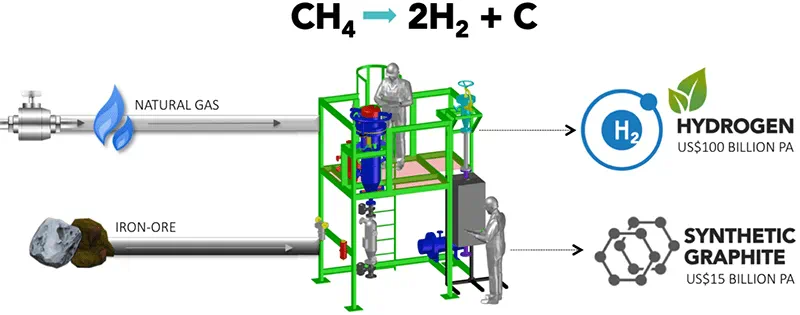Three-year deal signed with Hazer Group
The Western Australian Government has given its support for a country-first project that will see renewable hydrogen and graphite produced from wastewater.
Utility Water Corporation and ASX-listed technology development company, Hazer Group, signed a three-year deal to produce hydrogen and graphite from the Woodman Point wastewater treatment plant in Muster.
A target has been set to produce 100 tonnes of fuel-grade hydrogen and 380 tonnes of graphite a year.
Scheduled to begin in 2021, the Hazer Group has budgeted $16.5 million for the construction of the supply facility.
The project will benefit from additional funding of $9.4 million from the Australian Renewable Energy Agency for capital expenditure and operating costs.
Methane cracking
The Hazer Group was founded in 2010 and listed on the Australian Stock Exchange in 2015.
Originally developed at the University of Western Australia (UWA), the principal technology uses a process called thermocatalytic decomposition of methane (TCD), or more simply put, methane cracking.
This involves the splitting of natural gas into hydrogen and graphite using catalysts at elevated temperature and pressure.
For the Water Corporation project, excess biogas from the wastewater treatment process that was previously burnt off will be fed into an unprocessed iron ore catalyst.

This allows the biogas to be broken down and converted into the hydrogen and graphite, that can be “extracted in high quantities without creating carbon dioxide in the process”.
Hazer believes its process captures the carbon as valuable graphite, rather than having it oxidised to carbon dioxide.
The company says that the problem with existing hydrogen processes is that a significant amount of carbon dioxide gets released when the hydrogen gets made.
By taking this process where the CO2 is not released, it can result in a "clean and cost-effective way of generating hydrogen and graphite”.
Kick-starting renewable hydrogen capacity
Using the wastewater biogas model, Hazer Group says its process will significantly increase emission savings – compared to that of renewable hydrogen produced through the electrolysis model.
The resulting “highly crystalline” synthetic graphite can then be used in industrial applications, said Hazer, including energy as well as for lithium-ion battery developments.
“This initiative represents an important first step towards kick-starting renewable hydrogen production capacity and driving the use of zero-emissions transport fuel for buses, heavy trucking, waste collection, and light vehicle fleets,” said regional development minister, Alannah MacTiernan.







